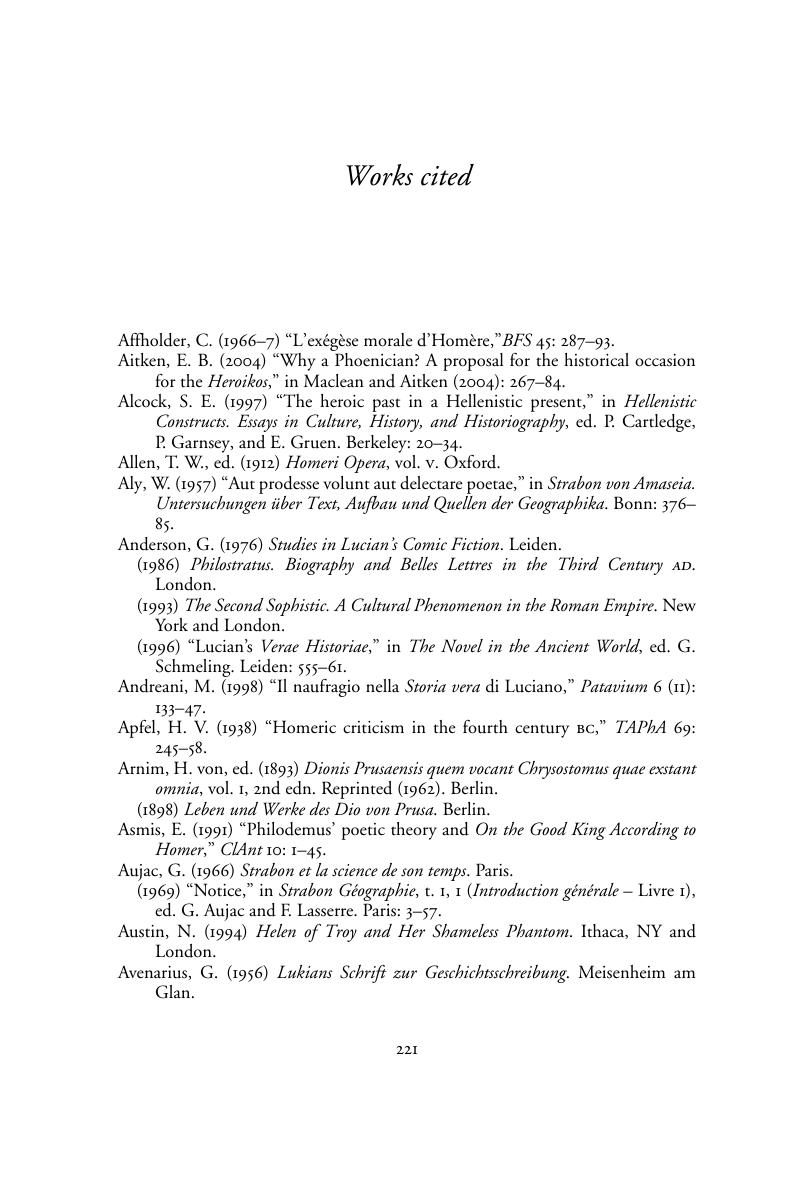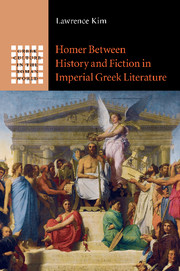Book contents
- Frontmatter
- Contents
- Acknowledgments
- Note on texts, translations, and abbreviations
- 1 Introduction: Imperial Homer, history, and fiction
- 2 Homer, poet and historian: Herodotus and Thucydides
- 3 Homer, the ideal historian: Strabo's Geography
- 4 Homer the liar: Dio Chrysostom's Trojan Oration
- 5 Homer on the island: Lucian's True Stories
- 6 Ghosts at Troy: Philostratus' Heroicus
- 7 Epilogue
- Works cited
- Index
- Index locorum
- References
Works cited
Published online by Cambridge University Press: 06 December 2010
- Frontmatter
- Contents
- Acknowledgments
- Note on texts, translations, and abbreviations
- 1 Introduction: Imperial Homer, history, and fiction
- 2 Homer, poet and historian: Herodotus and Thucydides
- 3 Homer, the ideal historian: Strabo's Geography
- 4 Homer the liar: Dio Chrysostom's Trojan Oration
- 5 Homer on the island: Lucian's True Stories
- 6 Ghosts at Troy: Philostratus' Heroicus
- 7 Epilogue
- Works cited
- Index
- Index locorum
- References
Summary

- Type
- Chapter
- Information
- Homer between History and Fiction in Imperial Greek Literature , pp. 221 - 238Publisher: Cambridge University PressPrint publication year: 2010

